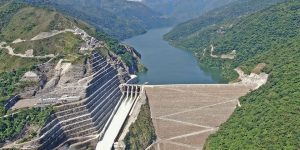Writing the research paper on the Hidroituango Dam and its potential contributions to Colombia's energy supply and social welfare has provided valuable insights into the complexities of large-scale infrastructure projects and the importance of conducting comprehensive cost-benefit analyses. This endeavor has deepened my understanding of the energy sector's challenges and the broader socio-economic implications associated with such ventures.
Firstly, the Hidroituango Dam project has underscored the significance of sustainable energy development. The pursuit of UN Sustainable Development Goal 7: Affordable and Clean Energy is crucial in ensuring a resilient and environmentally friendly energy future. However, the paper highlights how the dam's construction has resulted in ecological damage, including disruptions to local ecosystems and the livelihoods of fishing communities. This realization reinforces the importance of prioritizing renewable energy sources that minimize environmental impact, such as wind and solar power.
Additionally, the research has shed light on the concept of social cost-benefit analysis. The paper's examination of the Hidroituango Dam's externalities, including forced displacements, labor changes, and economic disparities, emphasizes the need to consider the broader societal implications of large-scale projects. Evaluating both the positive and negative impacts on affected communities is crucial for making informed decisions that prioritize social welfare.
Moreover, the paper reveals the challenges associated with cost overruns and budget exceedance in infrastructure projects. The Hidroituango Dam's financial sustainability has been called into question, as the project has surpassed its original budget. This serves as a reminder of the importance of responsible resource management and the efficient allocation of public funds. Understanding the potential economic risks and ensuring transparency in decision-making processes are vital components of energy projects.
Furthermore, the research has highlighted the need for a holistic approach to sustainable development. The paper suggests that addressing the externalities of the Hidroituango Dam, such as forced displacements and ecological deterioration, requires more than just financial investment in completing the project. It calls for improvements in political, socioeconomic, and environmental structures to foster long-term sustainability.

Undertaking this research has also illuminated the limitations and areas for further exploration. The paper acknowledges the need for more quantitative data to enhance the accuracy of cost-benefit calculations. By delving deeper into the statistical aspects of the project's impacts, future research can provide a more robust foundation for decision-making processes and policy development in the energy sector.
In conclusion, writing the research paper on the Hidroituango Dam has been a valuable learning experience in the realms of energy and social cost-benefit analysis. It has emphasized the importance of pursuing sustainable energy solutions, considering the broader societal implications of large-scale projects, and promoting responsible resource management. By applying the lessons learned from this research, we can strive towards a more sustainable and equitable energy future that prioritizes the well-being of both present and future generations.
Click here to read the research paper!

Studying the Hidroituango Dam project has provided valuable insights into the energy sector and the challenges associated with large-scale infrastructure projects. Through researching information available on Hidroituango from various sources, I have gained a deeper understanding of the complexities involved in such endeavors.
One key lesson learned is the importance of sustainable energy development. Analyzing the Hidroituango Dam's impact on Colombia's energy supply has highlighted the need to prioritize renewable energy sources to minimize environmental damage. This knowledge underscores the significance of pursuing a clean and affordable energy future, aligning with global sustainability goals.
Another valuable lesson relates to the social cost-benefit analysis of large-scale projects. Investigating the Hidroituango Dam's externalities, including forced displacements and economic disparities, has emphasized the importance of considering the broader societal implications of such ventures. Evaluating both positive and negative impacts is essential for making informed decisions that prioritize social welfare.
Additionally, researching the Hidroituango Dam has shed light on the challenges associated with cost overruns and budget management in infrastructure projects. Understanding the potential financial risks and ensuring responsible resource management are critical for successful and sustainable implementation of large-scale endeavors.
Furthermore, studying Hidroituango has highlighted the need for a comprehensive approach to sustainable development. The project's ecological damage and social disruptions call for improvements in political, socioeconomic, and environmental structures to foster long-term sustainability.
By delving into the information available on Hidroituango, I have acquired valuable knowledge about energy systems, the complexities of large-scale projects, and the importance of considering environmental and social factors in decision-making. This newfound understanding will inform future discussions and contribute to the pursuit of a more sustainable and equitable energy landscape.